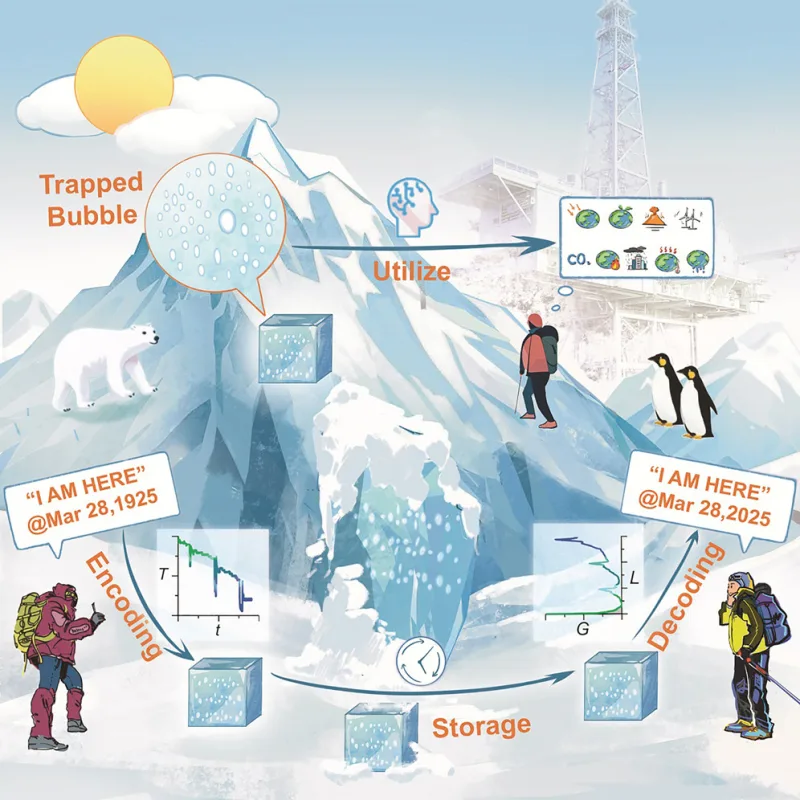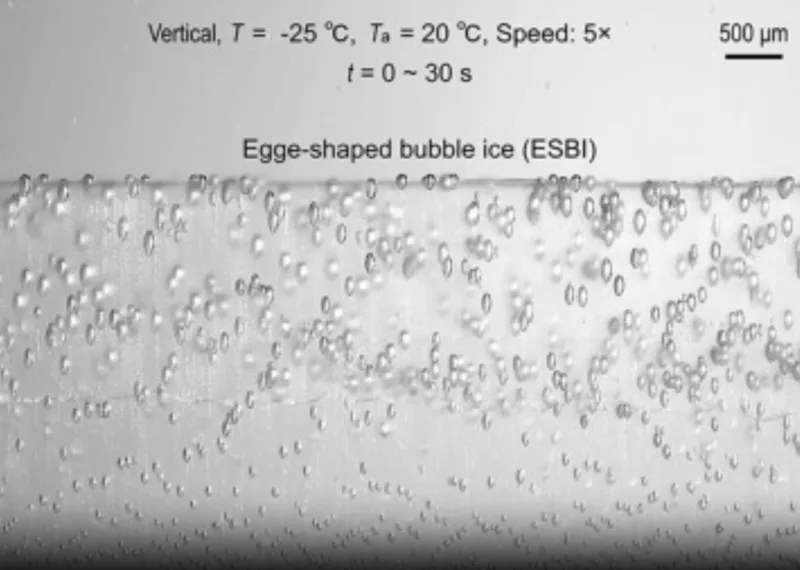Researchers have developed an innovative method to encode and store messages within ice by manipulating trapped air bubbles during the freezing process. Inspired by natural air bubbles preserved in glaciers, this technique uses controlled freezing rates to create distinct patterns of egg-shaped or needle-shaped bubbles, which correspond to characters in binary or Morse code. The approach offers a low-energy, covert solution for information storage in extreme cold environments like polar regions, where conventional methods face challenges.
Methodology

A thin layer of water is confined between transparent plastic sheets on a cold plate. By precisely adjusting temperature gradients and freezing rates, researchers control the formation of bubbles. Rapid freezing (sharp temperature drop) produces egg-shaped bubbles. Gradual freezing creates sequential layers: egg-shaped → mixed → needle-shaped → bubble-free ice.
The bubble patterns are mapped to binary/Morse code. For example, Binary assigns “0” or “1” based on bubble presence/shape. Morse code uses the bubble sequences to represent dots and dashes.

Lastly, the ice samples are photographed, converted to grayscale, and analyzed by computer vision algorithms (e.g., LLM-based tools) to detect bubble positions/sizes and translate them into readable text.
Advantages and Limitations
Binary encoding stores messages ~10× longer than Morse in the same ice volume, and the messages persist indefinitely in sub-zero environments without energy input. And, of course, the method is more covert than paper documents and avoids energy demands associated with telecommunications.
Applications
The method could also employ bubble dynamics within metal smelting and material manufacturing.
Future Directions
The team is now exploring 3D bubble geometries, diverse gas types, and higher-capacity encoding. Although it may not replace digital storage soon, this method could become vital for niche applications in extreme environments. The study, published in Cell Reports Physical Science, bridges glaciology, materials science, and cryptography.


